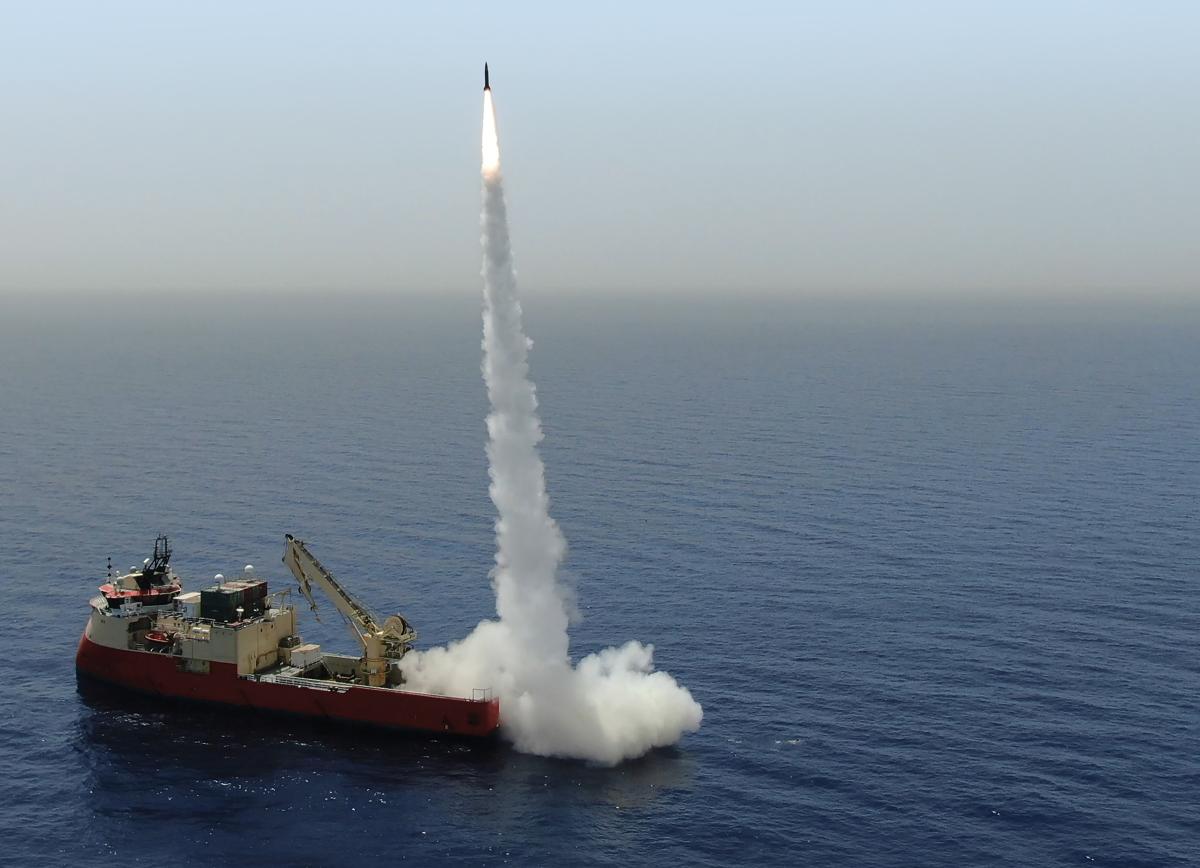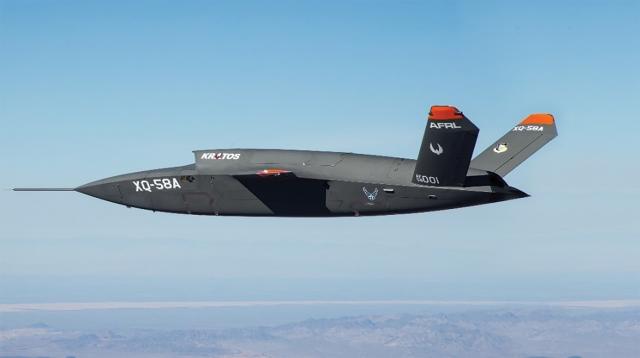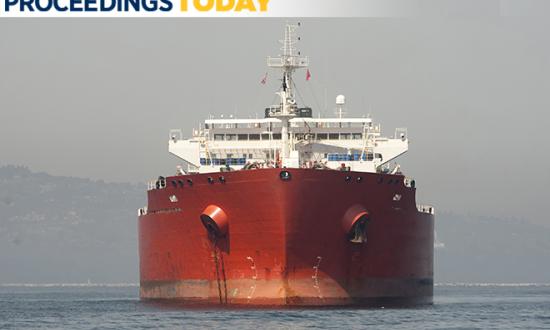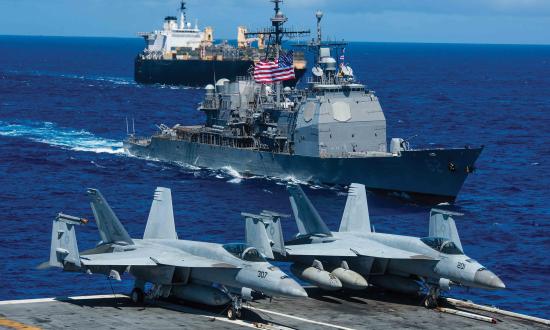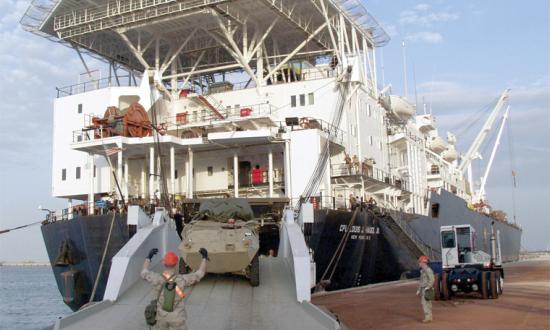‘‘Navies are in a new tactical era characterized by missile warfare.1’’ —Captain Wayne Hughes, U.S. Navy (Retired)
Politicians, military leaders, and analysts have spent years debating the correct number of ships the Navy needs—355, 500, or any other number—but that is the wrong metric. Far more relevant is how many missiles the Navy can bring to bear in a great power confrontation. In a fight with China, the U.S. Navy would be outnumbered and outranged in both ships and missiles.
As of September 2020, the Navy counts 293 battle force ships, but this includes auxiliaries.2 By contrast, the People’s Liberation Army Navy (PLAN) has 355 battle force ships, not counting auxiliary and support ships.3 While individual U.S. ships may be more capable, the U.S. Navy has to operate globally, while the PLAN sails mostly in Asia. Thus, on any given day, the PLAN outnumbers the Seventh Fleet by about 10 to 1 in the western Pacific, without even counting PLA land-based missiles and aircraft.
Naval aviation does not solve the problem. The expected addition of the unmanned MQ-25 Stingray tanker will gain the fleet little extra long-range striking power. As retired Navy Captain Jerry Hendrix has noted: “Four MQ-25s (80% of a squadron of five) would be required for a six-to-eight aircraft mission package to be able to reach and attack targets over a thousand miles from the carrier.”4
In short, neither carriers nor air wings will overcome the number and range issues.
And the Navy should not expect major support from Air Force and Marine Corps aviation units based in Japan. The PLA has between 750 and 1,500 short-range ballistic missiles that can reach Japan, which can be reinforced by hundreds of air- and sea-launched cruise missiles.5 In 2017, Navy Commanders Thomas Shugart and Javier Gonzalez simulated a Chinese surprise attack on U.S. facilities in Japan. Using only a fraction of the Chinese missile inventory, the simulation predicted destruction of or major damage to almost every significant fixed headquarters and logistical facility, almost every U.S. ship in port, and every runway and runway-length taxiway at all major U.S. air bases in Japan. The last item led directly to more than 200 U.S. aircraft destroyed on the ground in the first hours of the simulated conflict.6 Even air power based in the second island chain may be untenable, thanks to the 3,000-mile range DF-26 ballistic missile.
The Navy’s shipbuilding plan will not overcome these deficiencies. The planned U.S. fleet lacks the number of vertical-launch cells to win a missile fight, especially if it attempts to operate within U.S. missile range of China. Yet staying out of range of Chinese missiles means leaving allies to fight without U.S. naval support. Compounding the problem, if war comes, China will almost certainly fire first, leaving U.S. forces to absorb the first volley and hope to remain effective enough to reply.7
Different, Better Missiles
The clear solution is to put more and better missiles to sea. Unfortunately, the Navy continues to focus on expensive platforms rather than expendable weapons. Even the new, supposedly affordable Constellation-class frigates (formerly known as FFG[X]) are projected to average $1 billion per ship over the first four hulls.8 And the shipbuilding budget is not likely to do anything but shrink in the coming decade.
But the Navy has an opportunity to develop weapons that function independently of any specific platform. Rapid technological advances have made possible platform-independent, autonomous, long-range, precision weapons with capabilities that exceed many manned platforms. Russia, Israel, and China are leading the way in developing container-based missile systems. The United States must not lag, especially in developing weapons with longer range than it currently possesses.
The Russian Kalibr cruise missile, with a 1,000-pound warhead and a range of up to 1,500 miles, can be purchased installed in standard shipping containers. Russia also offers command-and-control and support containers. Israel’s Long-Range Attack (LORA) system has a range of about 250 miles and an accuracy of 30 feet. The mobile land-based system has been in service for ten years, and the containerized naval system has been test fired. According to a published report:
No modifications to the ship are required once the weapons system is loaded on. In addition to offensive missiles, cargo ships can be equipped with canisterized and/or concealed anti-ship missiles and guns, as well as air and missile defense interceptors and sensors—making them asymmetric and concealable warships.9
For its part, China appears to be developing a container-launched version of the YJ-18C (a version of a Russian Kalibr variant missile).10 Given China’s large merchant marine fleet and tens of thousands of fishing vessels, this system could provide the PLAN effectively unlimited launch platforms.11
Containerized weapons and support equipment are multimodal. They can be employed from container ships and the decks of warships or even moved ashore. Containers can be handled by commercial equipment in any major port, including those throughout the first and second island chains. Marine Corps personnel could match prepositioned containers with container trucks to operate from expeditionary bases—or even operate the systems on board ships, if the Navy and Marine Corps purchase and train on common components.
The United States should share development of the containerized systems with Japan, Taiwan, Korea, Australia, and Singapore and should consider assisting the Philippines, Indonesia, Vietnam, and other small nations with fielding them. Such international partnerships would further reinforce U.S. efforts to protect friends and partners in the East and South China Seas and beyond.
Different Platforms
Separating sensors from launch platforms would help protect the shooter nodes. A variety of industries use drones such as the Aerovel Flexrotor, a commercial, vertical-launch drone small enough to be mounted in containers. Autonomous drones with visual and infrared sensors and very long range—up to 1,500 miles for the Flexrotor—are already being used by conservationists to monitor illegal, unreported, and unregulated fishing and wildlife poaching.
Israel has been operating the Harpy autonomous drone for more than a decade. The vertical takeoff-and-landing Harpy can autonomously navigate up to 600 miles to hunt in the visual, infrared, and electromagnetic spectrums. The U.S. Air Force is experimenting with the Kratos Valkyrie. It has a 3,000-mile range, a payload of 600 pounds, cruises at .72 Mach, and is designed to be “runway-independent.”12 Kratos is also developing a version that can be transported in a standard shipping container.13
By combining such new technologies with widely available and relatively inexpensive commercial ships, the Navy could create a class of “missile merchants” that would possess deep magazines, long range, and onboard intelligence, surveillance, and reconnaissance (ISR), thus addressing both the number and range issues.14 They will be easy to upgrade as the Navy develops newer, longer- range missiles.
A used, 40,000 deadweight-ton (DWT) container ship can be purchased for about $40 million. With missile, drone, command-and-control, life-support, and maintenance containers, such a ship could be converted into a warship with long-range precision weapons. A package with 40–50 missiles would cost around $85 million—$1 to $1.5 million for each missile and $10 to $35 million for command, maintenance, and living modules and any minor ship modifications required. The Navy could purchase 40 “missile merchants” for a net acquisition cost of $125 million each, about one-quarter the cost of a Gerald R. Ford–class aircraft carrier and its air wing—while adding 1,600 to 2,000 missiles to the fleet.15 Wargaming and simulation would help determine the optimal missile loadout per ship.
Excess container space would permit a variety of passive self-defense containers, filled with anything from large sandbags to expanding foams to absorb the energy of explosions or repair holes in the hull. However, it would be essential that the Navy resist any bureaucratic impulse to require these ships to meet Naval Sea Systems Command General Specifications. Doing so would dramatically increase the cost and complexity of adapting reliable container ships.
Beyond upfront costs, real savings will also occur in manpower. A missile merchant will require only 22 sailors to operate the ship and another 20 to maintain and fire the weapons and associated systems. Four of these ships could be manned for the expected crew size of the future Constellation (FFG-62).16 Some containerized launch-control modules could also be assigned to Navy Reserve units that could routinely train on them during drill weekends. Those units’ annual training then could consist of operating the modules on board proof-of-concept ships—or even leased ships, if necessary. Such training can help identify the optimal mix of regulars, reservists, and merchant mariners.
One negative side effect of today’s smaller fleet is that reduced numbers have disrupted the long and successful Navy tradition of putting young officers in command. These relatively inexpensive ships could revive that tradition by increasing ship numbers significantly, and a missile merchant would be an ideal first command for lieutenant commanders.
The Navy could start the process by developing containerized weapons and buying or leasing two container ships—a large ship of 30,000 to 40,000 DWTs with a 3,000-plus container capacity and a smaller ship of perhaps 6,000 DWTs with a 150–250 container capacity. This would allow initial experiments with different operating concepts. Some questions the Navy might consider include: Can these platforms provide deep magazines for the destroyers that are operating outside the range of most Chinese weapons? Can commercially available, long-range drones establish ISR and communication networks to allow the ships to provide their own targeting information? Can larger drones such as the XQ-58A operate from these platforms? Could drones launch from a ship, conduct a mission, and recover ashore at a Marine Corps expeditionary base for reuse?
As concepts are refined, the Navy could buy as many as ten ships for about the price of one frigate to develop tactics and integrate these missile merchants into fleet fires. As a bonus, in peacetime these ships could supplement Military Sealift Command, moving material into and around operational theaters.
Command, Control, and Flexibility
Communication systems will be an integral part of the containerized weapon packages on the missile merchants. When communications are sustained, the embarked weapons’ long ranges would allow massed fires from dispersed platforms. But degraded or even denied communications would not render the missiles useless. Inexpensive vertical launch-and-recovery drones such as the Flexrotor would give the ships organic surveillance assets, allowing them to locate and engage targets even when communication links to higher headquarters are severely degraded. With clear commander’s intent and containerized sensors, the ships would stay in the fight, increasing the uncertainty China would face if it were to initiate a conflict.
Advanced manufacturing techniques would dramatically reduce the cost—and, more important, the time—required to build containerized systems. Rocket Lab USA is conducting space launches every six weeks using rockets that have many major components constructed through additive manufacturing (also known as 3D printing); 11 of its first 12 launches were successful.17 Relativity Space is planning to launch an entirely 3D-printed rocket in 2021, and the company plans to produce a rocket every 60 days with a workforce of only 150.18
The Navy should work with these and other innovative companies to develop rapid mobilization and production processes. It should even consider something similar to the Civil Reserve Aircraft Fleet, which subsidizes commercial aircraft purchases on the condition that, in times of war, those aircraft can be mobilized by the Department of Defense. A Civil Reserve Industrial Base to subsidize advanced manufacturing could provide surge capacity in a future crisis while investing in innovation immediately.
To accelerate progress in advanced cruise-missile development, the Defense Advanced Research Projects Agency should sponsor a contest to develop a long-range cruise missile that can be 3D printed for under $400,000 per unit and an intermediate-range one for under $200,000 per unit.
Ready and Waiting
One certain side effect of any war between the United States and China will be a rapid and dramatic reduction in maritime trade for the duration. With proper testing and development ahead of time, the Navy would be well positioned to replace significant combat losses with idle container ships. (Some former senior naval officers have suggested the opening cost of any such fight could be two carrier strike groups.) Missile merchants armed with containerized weapons could provide rapid reinforcements—if the Navy starts working with manufacturers now, as well as training Naval Reserve crews to man the mobilized ships.
The 2018 National Defense Strategy calls for U.S. forces to be arrayed in contact, blunt, surge, and homeland layers, but current naval platforms are not well suited to either the contact or blunt layer.19 Advanced Chinese antiaccess systems will limit how far forward the fleet can deploy before China’s fleet and missile arsenal are degraded. Pushing carrier strike groups too far forward places too much blood and treasure in harm’s way without contributing to the fight. Carriers will play a vital role in winning the midocean fight for dominance but are much too valuable to risk in the opening stages.
By contrast, missile merchants would be low-value platforms of the type historically put at risk in great power conflict—consider the picket ships that screened the U.S. fleet during the Battle of Okinawa. Unlike those picket ships, however, missile merchants would pack a considerable offensive punch while being much tougher and needing smaller crews. Former Deputy Secretary of Defense Robert O. Work has suggested that sinking hundreds of PLAN ships on the opening day of any fight will be key to ending the conflict quickly.20 Containerized weapons and sensors on converted merchant ships could provide effective and affordable platforms to deploy cruise missiles and autonomous drones rapidly and in sufficient numbers to win. Just as important, they provide resilience. If the initial engagements do not go well, missile merchants could be rapidly mobilized to sustain the fight.
1. CAPT Wayne Hughes, USN (Ret.), Fleet Tactics and Coastal Warfare 2nd. ed., (Annapolis, MD: Naval Institute Press, 2000), 167.
2. Office of the Secretary of Defense, “Military and Security Developments Involving the People’s Republic of China, 2020 Annual Report to Congress,” vii.
3. Ronald O’Rourke, “China Naval Modernization: Implications for U.S. Navy Capabilities—Background and Issues for Congress,” Congressional Research Service, 30 August 2019, 18.
4. Jerry Hendrix, “Navy Must Boost Carrier Air Wing’s Range, Size & Lethality,” Breaking Defense, 19 June 2017.
5. Office of the Secretary of Defense, “Annual Report to Congress: Military and Security Developments Involving the People’s Republic of China 2019,” 2 May 2019, 47.
6. Thomas Shugart and Javier Gonzalez, “First Strike: China’s Missile Threat to U.S. Bases in Asia,” Center for a New American Security, June 2017.
7. Robert O. Work and Greg Grant, “Beating the Americans at Their Own Game: An Offset Strategy with Chinese Characteristics,” Center for New American Security, June 2018, 5.
8. Jon Harper, “Cost Estimates Questioned for New Navy Frigate,” National Defense, 18 June 2020.
9. Yuav Zitun, “In First, Classified Israeli Missile Hits 400 km Target Range,” i24News, 2 June 2020, www.ynetnews.com/business/article/HkWgzk4hL.
10. “China Is Building Long-range Cruise Missiles Launched from Ship Containers,” navyrecognition.com, 8 April 2019.
11. Zhang Hongzhou, “China’s Fishing Industry: Current Status, Government Policies, and Future Prospects,” Center for Naval Analyses, 9 July 2015.
12. Kratos Unmanned Aerial Systems, “Kratos: XQ-58A Valkyrie,” kratosdefense.com.
13. Joseph Trevithick, “This Containerized Launcher for the XQ-58A Valkyrie Combat Drone Could Be a Game Changer,” The Warzone, thedrive.com, 16 October 2019.
14. CAPT R. Robinson Harris, USN (Ret.); Andrew Kerr; Kenneth Adams; Christopher Abt; Michael Venn; and Col T. X. Hammes, USMC (Ret.), “Converting Merchant Ships to Missile Ships for the Win,” U.S. Naval Institute Proceedings 145, no. 1, (January 2019).
15. Congressional Research Service, “Navy Ford (CVN-78) Class Aircraft Carrier Program: Background and Issues for Congress,” 8 June 2020, 2; Gary Wetzel, “The Slow Death of the Carrier Air Wing,” Jalopnik, 19 July 2017.
16. Eric Wertheim, “The U.S. Navy’s Future Frigate,” U.S. Naval Institute Proceedings 141, no. 7 (July 2020): 91.
17. Darrell Etherington, “Rocket Lab’s Launch Fails During Second Stage Burn, Causing Loss of Vehicle and Payload,” TechCrunch, 4 July 2020.
18. Michael Sheetz, “Space Start-up Relativity Verified Its 3D Printing Process Works to Build a Rocket,” CNBC, 12 May 2020.
19. Secretary of Defense James Mattis, “Summary of The 2018 National Defense Strategy of the United States of America,” Department of Defense (2018), 7.
20. Sydney J. Freedberg Jr., “US ‘Gets Its Ass Handed To It’ in Wargames: Here’s a $24 Billion Fix,” Breaking Defense, 7 March 2019.



